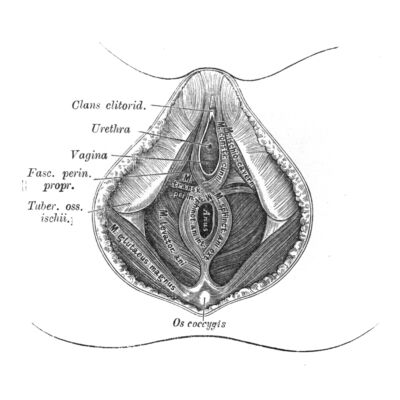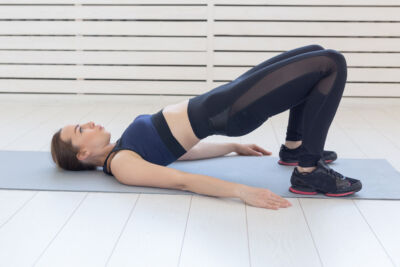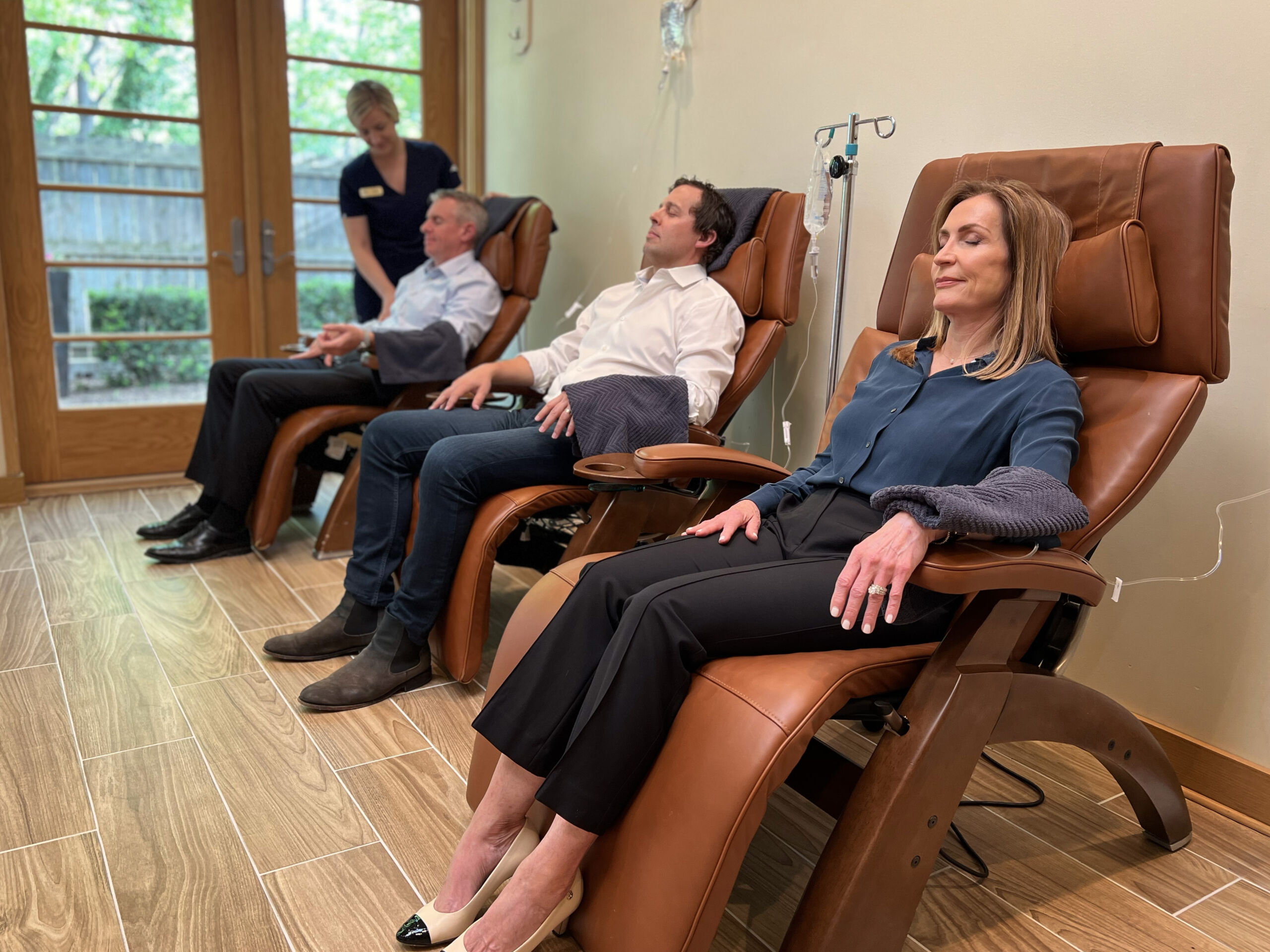It’s time to get personal about a very important but little-talked-about area of your health: your pelvic floor.
The pelvic floor is a part of the body that many women have heard of but aren’t sure where it is or how to find it — or why it’s critical to many bodily functions.
 Let’s start with a rundown of the anatomy. Your pelvic floor is a group of three coccygeal muscles that sit at the bottom of your core, acting like a sling at its base. The pelvic floor connects to two other deep-core muscles: the transversus abdominis, which is the part of your core that acts like a corset starting in your back and wrapping around your front; and the multifidus, which runs lengthwise all the way down the center of your back.
Let’s start with a rundown of the anatomy. Your pelvic floor is a group of three coccygeal muscles that sit at the bottom of your core, acting like a sling at its base. The pelvic floor connects to two other deep-core muscles: the transversus abdominis, which is the part of your core that acts like a corset starting in your back and wrapping around your front; and the multifidus, which runs lengthwise all the way down the center of your back.
Coming out of the bottom of your pelvic floor is the urethra, vagina, and anus. Thus, the pelvic floor plays a major role in supporting and governing the duties of those parts of your body, including urination, sexual function, and excretion.
So, if your pelvic floor isn’t functioning optimally (and for most women over 50 and some over 20, it’s not), it can lead to issues in any of those areas. Similarly, since it’s connected to those two major deep core muscles, pelvic floor weakness or tightness can lower the effectiveness of the rest of your core, which is critical for stability and mobility, especially as you age.
While some level of pelvic floor weakness or tightness is common in most women, in the more severe cases, it can even lead to organ prolapse — for example, the bladder descending into the urethra — which typically calls for general surgery.
Thus, working on your pelvic floor health and function is essential. The good news is, there are growing resources for education and training in this area. Cindy Vickers, personal trainer at PALM Health with a focus in pelvic floor training with women, shares some of her expertise in the area.
“There are two major malfunctions that afflict the pelvic floor, depending on the person: hypertension and hypotension,” says Cindy.
Hypertension, or a hypertonic pelvic floor, means that muscle is consistently too tight. The result? Constipation, inability to release urine, and pain, whether generalized or sexual.
Hypotension, or a hypotonic pelvic floor, poses the opposite problem: the muscle is too weak or loose and cannot contract properly. This is the malfunction that leads to incontinence, most commonly.
However, even though you may be more hypertonic while someone else may be more hypotonic, they both lead back to the same need to work on the pelvic floor. “You can’t really separate the two issues,” says Cindy. “Improving your pelvic floor health involves both strengthening and stretching techniques whether you’re hypertonic or hypotonic.”
 The reason for this? It’s less about only stretching or only strengthening your pelvic floor to reverse your issue, and more about retraining your pelvic floor to function properly. This includes the ability to both contract and relax the muscle appropriately.
The reason for this? It’s less about only stretching or only strengthening your pelvic floor to reverse your issue, and more about retraining your pelvic floor to function properly. This includes the ability to both contract and relax the muscle appropriately.
If you think about it, the pelvic floor is just like any other muscle in your body. To train your glutes or your quads or your arms properly, it’s important to build their strength but also recover those muscles well and improve their mobility with stretching. The muscles need to know how to contract and expand fluidly. Otherwise, they’ll be tight all the time and cause pain, soreness, and tension.
Same goes for your pelvic floor — but in this case, regaining control over its ability to contract and relax will not only improve and prevent pain, but also help with situations that can feel quite inconvenient and often embarrassing, like incontinence or passing gas without control.
According to Cindy, proper functioning of the pelvic floor is actually a natural reflex. “Over time, though, like other muscles, if you don’t actively train them, your pelvic floor starts to lose strength and mobility.”
This, then, leads to the issues that many women start to experience around or after the age 50, like incontinence or urinary urgency.
The trick with those issues, too, is that they are self-perpetuating. As you develop issues with urgency due to a weakening pelvic floor, you use the restroom more frequently and empty your bladder before it’s full. This forms a memory in your bladder and makes the urgency worsen.
While issues like this are common, they’re not normal. They’re a direct result of your pelvic floor losing function — and this is why it’s imperative to retrain it.
As you can imagine, training your pelvic floor can be difficult. It’s not the type of training most people are used to doing, and it’s not a muscle you’re likely used to engaging. This is where working with a trainer with this specific goal in mind can be beneficial.
Cindy sees clients for pelvic floor training at PALM Health, and in her sessions, there are a few different types of exercises she does with her clients.
 “The first and possibly the most important part is learning how to breathe properly with diaphragmatic breathing exercises, which is helpful to have a trainer for because true diaphragmatic breathing is quite difficult at first,” says Cindy.
“The first and possibly the most important part is learning how to breathe properly with diaphragmatic breathing exercises, which is helpful to have a trainer for because true diaphragmatic breathing is quite difficult at first,” says Cindy.
Your pelvic floor moves in tandem with your diaphragm when you breathe deeply: moving down and stretching on the inhale, and coming back up on the exhale. Thus, there is a natural relaxation and contraction of your pelvic floor when you engage in diaphragmatic breathing — which is, again, a natural reflex that unwinds over time with tension (check out our upcoming workshop with physical therapist Ashley Kumar for a crash course on diaphragmatic breathing as well).
Beyond diaphragmatic breathing exercises, Cindy also works with her clients to stretch and strengthen the muscles around the pelvic floors, namely, those two co-contractors, the transversus abdominis and the multifidus. This inadvertently helps to work the pelvic floor.
Cindy also incorporates classic exercises like squats, lunges, and more, which take on more benefit when done with pelvic floor engagement in mind. “The key here is mind-body connection. If you can learn to keep your attention on your pelvic floor and work out peripheral muscles while engaging your pelvic floor, you’ll really start to see results.”
At the end of the day, it’s important to know that if you have struggled with uncomfortable issues like incontinence, constipation, or sexual dysfunction, you’re not alone — in fact, most women experience some level of it. “What I really want you to take away is that it gets better,” says Cindy. “If you work on training your pelvic floor, these issues will get better over time — it just takes a little work on your part.”
PALM Health is an innovative lifestyle medicine and wellness center that offers a comprehensive range of advanced medical and wellness services, empowering people to transform their health and feel their best in mind and body.








